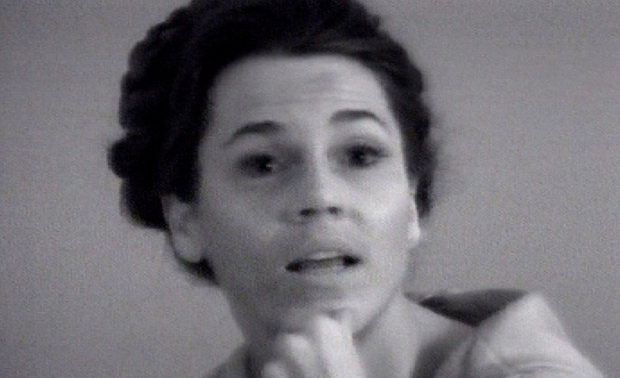
In late November 1967, the newly-named Sony Corporation – a young, but blossoming Japanese electronics company – released the Portapak CV-2400, the world’s first consumer videotape recorder. Battery-powered, portable, and inexpensive: no longer was video the preserve of elite television companies and their hegemonic value systems.
As the Portapak’s poetic manual put it: “The portable video system represents the essence of decentralised media. One person now becomes an entire TV studio, capable of producing a powerful statement.”
Though Sony’s advertising campaigns for the Portapak depicted the video camera being used by all echelons of society, according to Alaina Claire Feldman, head of exhibitions for Independent Curators International, it became a potent weapon for French feminist collectives during the 1970s. Activist groups like Vidéa and Insoumuses documented wild demonstrations along the boulevards of Paris and radical manifestos against male power.
Feldman, the organiser of a new exhibition at Hackney’s SPACE studios, which is screening a number of these engrossing, politicised videos, explains: “The Portapak offered an opportunity for documentation of what was happening in the streets, in the factories, in private libraries and conversations, but also for creative critique of the moving image itself.”
“The portable video came exactly at the right moment: the start of the women’s liberation movement in France, hot on the heels of May ‘68,” she continued. “It was also totally unexpected that women would embrace technology at the time, and because video was so new, it had no history or canon to struggle with; it was entirely open.”
The name of the exhibition, ‘Cherchez La Femme’, is a reappropriated French colloquialism that traditionally suggests the root of all problems is women. It is this sort of institutional misogyny that these recently-translated feminist films were, and still are, railing against.
Maso and Miso Go Boating (1976), for example, is a scathing meditation on the rigid roles that women are permitted in public life. After recording footage of a French television talk show, Delphine Seyrig, along with three other women, eviscerate the shocking statements made by Françoise Giroud, supposedly the country’s Minister for Women’s well being. They edit, freeze-frame, superimpose, and add hand-written titles to Giroud’s various patronising claims: that surgery is too difficult for women, or how women’s ambitions should never go beyond pleasing their man.
The videos show both the dynamic potential in, and the collective creation of the films, mirroring how the feminist movement actually functioned. In Kate Millet Speaks about Prostitution with Feminists (1975), we see this reality: sat crosslegged on the floor, in a room with bookshelves filled to the brim, French and American feminists passionately debate the plight of the prostitutes, while ceaselessly puffing away on their Gauloises. Innovations in technology can often lead to societal change, and the Sony Portapak was no exception. The dissemination of low-budget and lo-fi work like this forged networks of exchange, catalysed strains of guerilla television, and allowed self-representation for many women. Whether these feminist collective’s goals have been achieved is still far from certain, but Feldman has “hope there’s some consequences that eventually come out of it” for the residents of Hackney that get to see them.
Cherchez La Femme is at SPACE Studios, 129—131 Mare Street, E8 3RH until 13 July.
